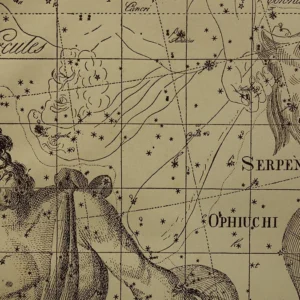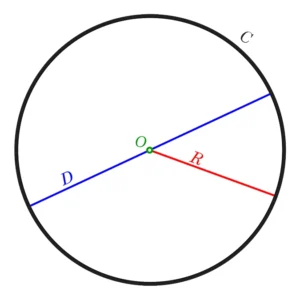Lesya Ukrainka’s biography tells the story of the short life of a talented poetess whose works have entered the treasury of Ukrainian and world literature. If fate had been kinder to the writer, we might not have seen her outstanding works, as each of Lesya Ukrainka’s poems is imbued with the sufferings and anxieties that filled her soul.
Recommend that you also read – A Brief Biography of Taras Shevchenko by Year.
Lesya Ukrainka’s Biography from 1871 to 1883
The legendary poetess, known as Lesya Ukrainka, was actually named Larysa Petrivna Kosach (after marriage, Kosach-Kvitka). She was born on February 13 (25 in the new style), 1871, in Novograd-Volynsky, Volyn province (now Zvyagel, Zhytomyr region).
Larysa’s parents, Petro Antonovych and Olha Petrivna, had noble origins. Her father was a real state councilor, and her mother was a children’s poet and writer who published her works under the name Olena Pchilka. Olha Petrivna belonged to the Dragomanov family. She was the sister of the public figure, scholar, and founder of Ukrainian socialism, Mykhailo Drahomanov.
Lesya Ukrainka became the second child in the large Kosach family. She had brothers Mykhailo (the eldest) and Mykola, and sisters Olha, Oksana, and Izidora.
Larysa’s parents were educated and progressive for their time. They paid much attention to the intellectual development of their children, so it is not surprising that the future writer could read at the age of four. The girl’s literary talent emerged early. She wrote her first poem, “Nadiya,” at the age of nine.
In January 1881, Lesya Ukrainka caught a severe cold. The illness led to a serious complication – bone and joint tuberculosis. Despite the ailment, ten-year-old Larysa, along with her brother Mykhailo and sister Olha, moved to Kyiv that same year to continue their education. There, she studied with private tutors following the gymnasium curriculum, took piano lessons, and learned Latin and Greek.
In 1883, Larysa Kosach’s health deteriorated due to tuberculosis. In September, she underwent surgery in Kyiv, during which the diseased bones were removed from her left arm. The girl began to gradually recover. In December, she moved with her family to the village of Kolodyazhne, Volyn province. There, she continued her education under her mother’s supervision, learning French and German.
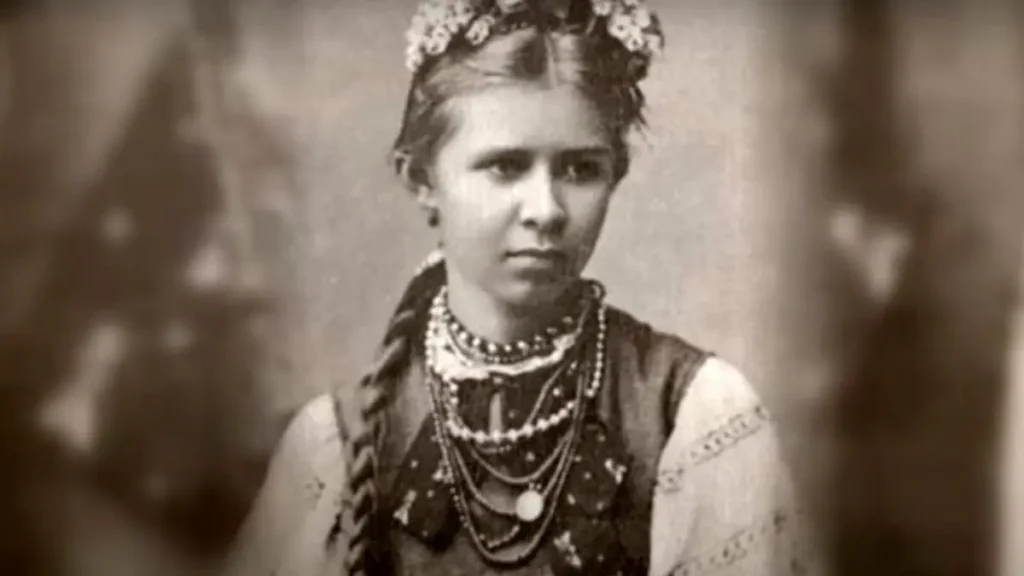
1884 – 1885: The Beginning of Literary Activity
At the age of 13, Larysa Kosach began actively writing poetry and publishing it under the pseudonym Lesya Ukrainka in Galician magazines “Dzvinok,” “Zorya,” and “Literary and Scientific Bulletin.” During this time, her poems:
- “Sappho,”
- “The Lily of the Valley,”
- “The Beautiful Summer Has Passed” were published.
In parallel with writing her own poems, the girl actively engaged in translations. In 1885, a collection of works by Mykola Hohol, translated into Ukrainian by Larysa and her brother Mykhailo, was published in Lviv.
Lesya Ukrainka’s Biography from 1886 to the Early 1890s
In the mid-1880s, the poetess returned to Kyiv and continued her education. She started attending the Kyiv Drawing School of Murashko and achieved considerable success in painting. However, her main occupation remained poetry.
Lesya Ukrainka began actively communicating with Ukrainian public figures and writers. In 1888, she became a co-founder of the “Pleiades” literary youth group, which existed until 1893.
In 1890, Lesya Ukrainka’s creative biography was enriched by the lyrical poem “Contra Spem Spero!” which became her creative credo and one of her most recognizable works.
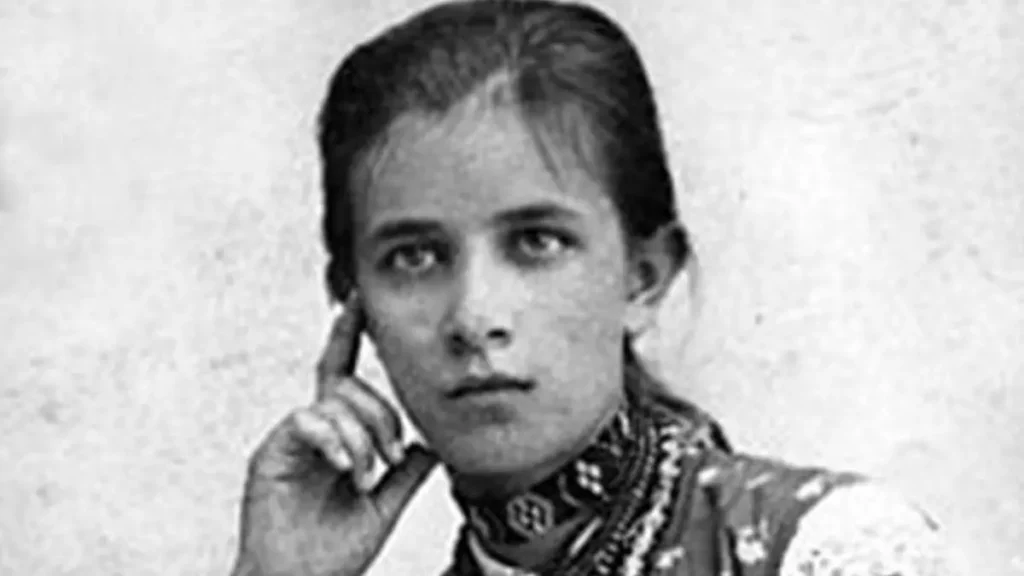
In 1891, the poetess traveled to Galicia and Bukovina. This journey brought her acquaintances with Ivan Franko, Olha Kobylianska, Vasyl Stefanyk, and other literary figures of Western Ukraine. Lesya maintained friendships and correspondences with many of them until the end of her life.
In 1893, the first collection of the poetess’s works, “On the Wings of Songs,” was published in Lviv. It included Lesya Ukrainka’s poems created in the 1880s and early 1890s, such as:
- “Contra Spem Spero!,”
- “The Mermaid,”
- “Starry Sky,”
- “Seven Strings,”
- “A Journey to the Sea,” and others.
In addition to writing poetry, Lesya Ukrainka continued her translation activities and published the “Book of Songs” by the German poet Heine in Ukrainian.
Lesya Ukrainka’s Biography in the Late 1890s and 1900s
Lesya Ukrainka could not stay away from socio-political life. In 1896, together with the writer Ivan Steshenko, she founded the socialist organization “Ukrainian Social Democracy” in Kyiv. Its members published prohibited revolutionary literature and works of Ukrainian figures in emigration. The organization’s activities extended to the territory of Dnipro Ukraine.
In the same year, Lesya Ukrainka’s first drama, “The Blue Rose,” appeared in her works. In 1899, the second collection of poems, “Thoughts and Dreams,” was published in Lviv.
In 1897, the poetess went to Yalta for treatment. There she met the Belarusian social democrat Serhiy Merzhynsky, who also came to Crimea to treat tuberculosis. The writer called her relationship with Merzhynsky friendship, but when he fell seriously ill in early 1901, she went to Minsk to be with him in his last days. Lesya Ukrainka’s creative biography includes two poems dedicated to the Belarusian: “The Lips Speak: He is Gone Forever” and “Possessed.” The latter was written by Larysa at Merzhynsky’s bedside in one night.
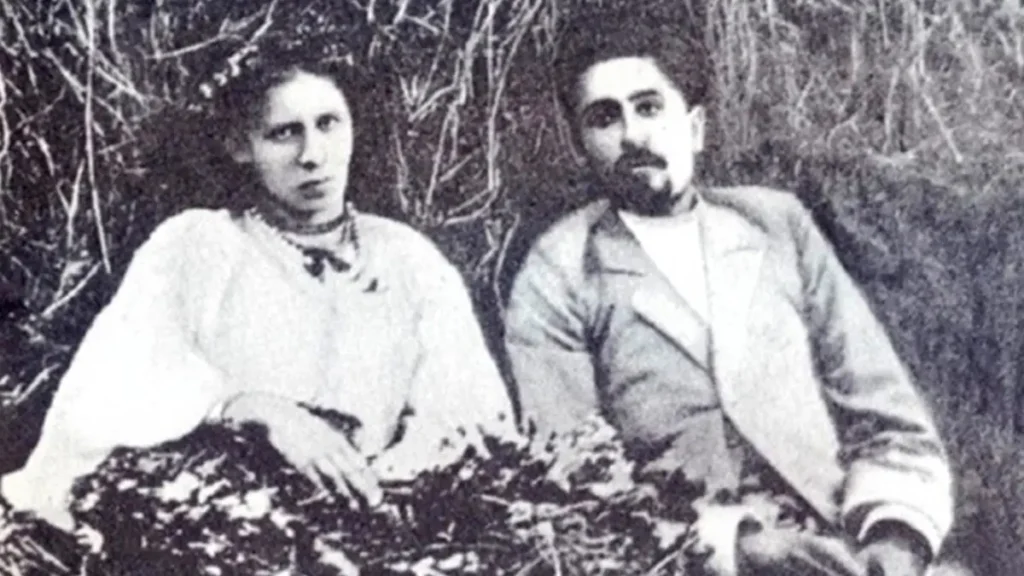
In 1902, the poetess published her third collection of poems titled “Echoes” in Chernivtsi. This book became the last lifetime publication of the artist’s works.
On August 7, 1907, the poetess married the folklorist Klyment Kvitka, nine years younger than her. Lesya Ukrainka had met her husband back in 1898. For a time, they were united only by a love of literature, but gradually their relationship turned romantic. Klyment Kvitka was the only official husband in Lesya Ukrainka’s biography. She lived with him in marriage until her death.
After the wedding, the poetess moved with her husband to Crimea, where he got a job in court. In the same year, her works “On the Ruins,” “Cassandra,” and “Aisha and Mohammed” were created.
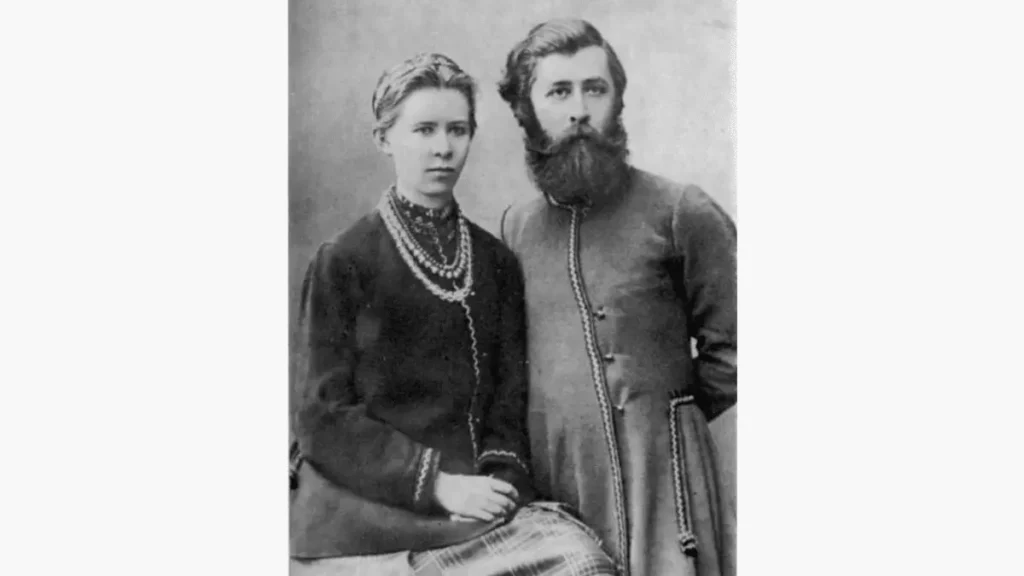
The Final Period of Life: 1910 – 1913
The last years in Lesya Ukrainka’s biography were filled with creativity. Together with her husband, Larysa Kosach-Kvitka participated in an ethnographic expedition led by Filaret Kolessa, during which she studied Ukrainian folklore.
In 1911, the writer completed the drama-fairy tale “The Forest Song,” which became the pinnacle of her work. The following year, she wrote the poem “The Stone Host.”
In early July 1913, the writer’s health condition sharply deteriorated due to progressive kidney disease. At her mother’s insistence, who believed that a change in climate would benefit her daughter, Lesya Ukrainka moved to the mountainous Georgian village of Surami. Despite her severe illness, the poetess planned to work on a new drama “On the Shores of Alexandria,” but she never managed to start it.
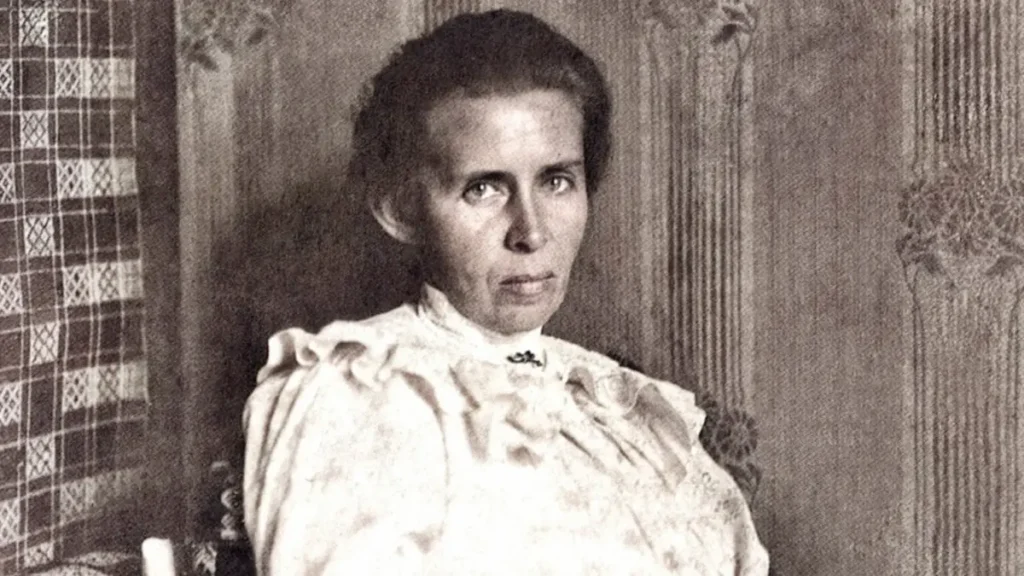
On July 19 (August 1 in the new style), 1913, Lesya Ukrainka passed away in the presence of her husband. The poetess was 42 years old. A farewell to the writer took place in Kutaisi. Later, her body was transported to Kyiv and buried at the Baikove Cemetery.
Video About Lesya Ukrainka
To learn more about the life and work of the outstanding Ukrainian poetess, watch the dedicated YouTube video.
Frequently Asked Questions About Lesya Ukrainka
The poetess authored 270 poems. Nearly half of them were published only after Kosach-Kvitka’s death.
Lesya Ukrainka grew up in a creative environment since her mother was a children’s writer. Significant influences on her work also came from M. Drahomanov, I. Franko, M. Starytsky, and other prominent figures who surrounded Larysa Petrivna at various periods of her life.
Lesya was the name used by Larysa Kosach-Kvitka’s family since early childhood. She “borrowed” the surname Ukrainka from her uncle Mykhailo Drahomanov, who published his works under the pseudonym “Ukrainian.”
Lesya Ukrainka was the founder of the feminist movement.
“Contra Spem Spero!,” “The Word, Why Are You Not Like Solid Steel?,” “The Forest Song,” “Dream,” “The Stone Host.”









